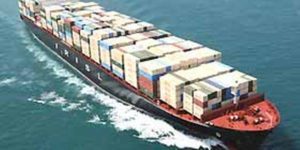Report from Clean Cargo Working GroupTM, representing 85 percent of ocean containerized shipping and industry customers, shows a drop in CO2 emissions in 2017

San Francisco, August 16, 2018—Carbon dioxide emissions from 22 of the world’s leading ocean container carriers, representing 85 percent of global containerized shipping, continued to fall in 2017, but more innovation and collaboration across the value chain is needed to achieve ambitious global climate goals, reports BSR’s Clean Cargo Working GroupTM.
The Clean Cargo Working Group’s annual aggregate average Trade Lane CO2 Emissions Factors are compiled from the carbon dioxide emissions data reported by over 3,200 ships from 22 of the world’s leading ocean container carriers. Since 2009, when the group first publicly reported the aggregate averages, emissions per container move have dropped by 37.1 percent. This year’s report shows that average CO2 emissions per container per kilometre for global ocean transportation routes fell 1 percent from 2016 to 2017.
“The progress on climate and air quality we are seeing in container shipping—one of the highest emitting industries—is absolutely critical for achieving global environmental goals,” said Nate Springer, Manager at BSR. “We need more innovation in low-emission technology, as well as continued collaboration, to meet the ambitious goal of halving CO2 emissions from shipping by 2050, recently announced by the International Maritime Organization.”
Several years ago, Clean Cargo developed a standardized methodology and reporting system that was adopted globally by the industry, with carriers submitting operational data from the entire fleet to BSR on an annual basis for trade lane emission factors aggregation. The results produce environmental performance scorecards for each carrier, which are used to meet corporate supply chain sustainability goals by 95 percent of shipping customers who participate in the group.
Clean Cargo members also work to accelerate progress by sharing best practices, discussing trends and innovations across the full logistics value chain, and designing tools and pilot projects that address challenges to progress.
Source: Hellenicshippingnews

